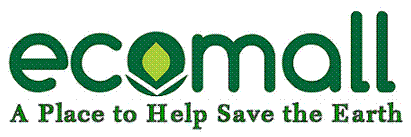

POLLINATION CELEBRATION:
TIME TO TRY A HUMMINGBIRD FEEDER!



POLLINATION CELEBRATION:
TIME TO TRY A HUMMINGBIRD FEEDER!

It may sound a little silly, but this is serious stuff for the environment and our food sources. Albert Einstein even said “if the bees go, we go four years later”. Scary? Absolutely- as more pollinator species are being considered “at risk”. Considered at-risk by whom you may ask? National Wildlife Federation, Center for Biological Diversity are two reputable groups who come to mind.
We hear buzz (no pun intended) of disappearing honeybees and butterflies… both big time pollinators. The fungus scientists can’t figure out (white nose syndrome) which continues to wipe out bat colonies. It’s a pretty sad state for future generations, and luckily folks are starting to notice.
This White House Memorandum looks promising - it surfaced last week in conjunction with National Pollinator Week.
What are some easy things to do in your own patch of green?
The garden is key, and most folks reading this have already quit using pesticides… right? If not-now’s the time, they’re harmful to everyone and everything around us! (no matter what the pest control people say)
Plant native: Both annuals and perennials that will provide blooms from spring through fall. Tube shape flowers are nectar producers, enticing butterflies and hummingbirds (another major pollinator). Salvia, tulip tree, honeysuckle, trumpet vine, a simple search for native flowering plants will best describe your locale.
Provide a fresh water source, it’s integral to all friendly fliers. Shallow is best-just 2-3” maximum depth. If stagnant water is of concern, add a water wiggler, dripper or any accessory that keeps water moving. Mosquitoes can’t lay eggs in moving water.
Try a hummingbird feeder! If you’ve ever entertained the idea of feeding the birds… hummingbirds provide maximum entertainment for very little cost! They can even be quite mesmerizing at times. Make your own nectar-it’s only table sugar and water, no red dye necessary! The ratio is 1:4 sugar to water. One cup sugar to 4 cups of water. Never add anything else as it’s harmful to the tiny sprites. No need to boil the water (any bacteria spread is by the bird’s beaks-not the nectar). Boiling some water to dissolve sugar does work best. Store unused nectar in the fridge for up to two weeks.
The solution must be changed every 2-3 days in extremely warm weather, so a giant feeder filled to capacity is certainly not necessary. Saucer or basin style hummingbird feeders allow for perching while eating although hummers can sip in mid-air as well. These feeders won’t drip! Unlike tube feeders (still popular with the birds) basins and saucer styles are completely drip-free.
Should ants discover the sweet solution… forget it! One ant in the nectar ruins the whole batch. Hummingbirds won’t touch it. Using an ant moat with your feeder will thwart pesky ants and save your nectar.
So go celebrate Pollinator Week (late like us) consider a small oasis that entices beneficial fliers to your place!
Click below to e-mail this article to a friend |
|---|
Written by:
The Bird House Chick
RELATED LINKS:

| IN-HOUSE RESOURCES |
|---|